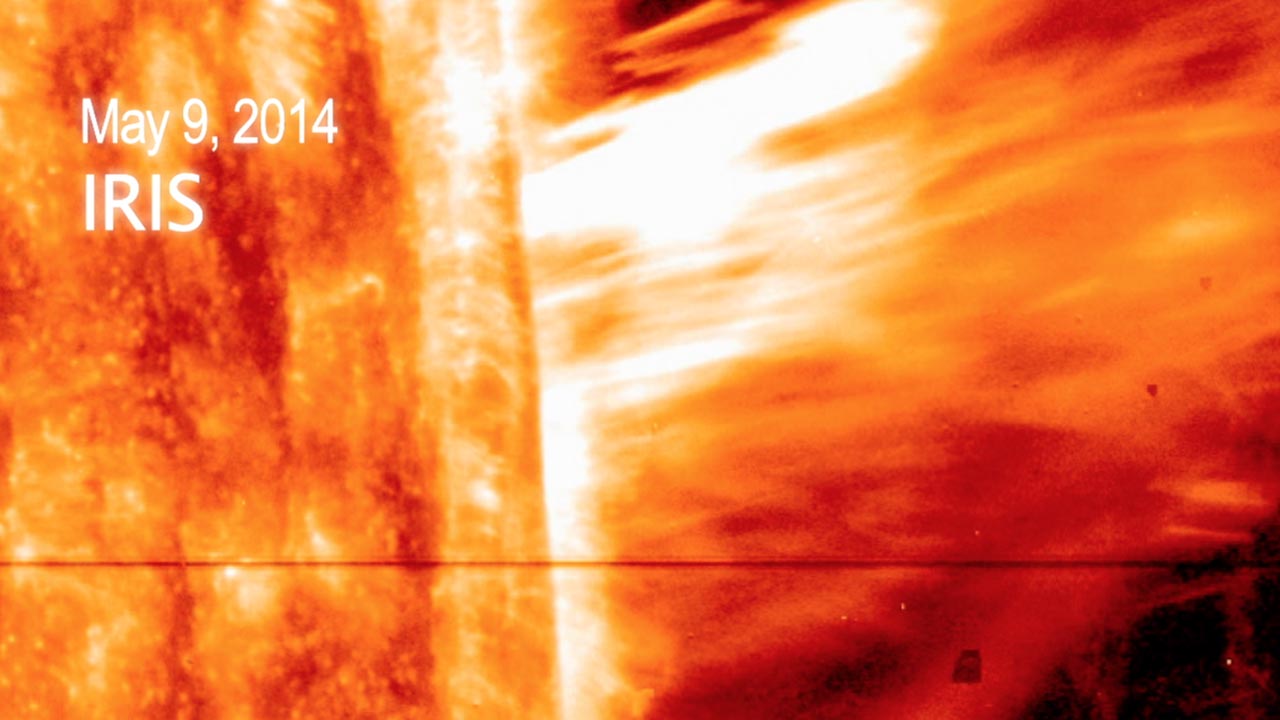Beautiful Explosion
A giant burst of solar material surged off the side of the sun on May 9, 2014—and NASA's newest sun-watching mission caught the event in extraordinary detail. This was the first explosion known as a coronal mass ejection (CME) that the Interface Region Imaging Spectrograph, or IRIS, spacecraft was able to observe. The spacecraft must commit to pointing at certain areas of the sun at least a day in advance, so catching a CME in the act involves some educated guesses and a little bit of luck. On this day it focused in on the left side of the sun and happened to see the base of the CME. It recorded super-hot material erupting from the sun at speeds of 1.5 million mph. Watch the video to see it for yourself.

A NASA spacecraft zooms in on a magnificent solar eruption.
A wave of solar material leaps from the sun in this video, showing an area on the sun seven-and-a-half Earths wide and five Earths tall.

The black line seen in the video and above is due to an instrument that analyzes the wavelengths present in one thin slice of the sun at a time.

The black lines in this image—a kind of data called spectra—represent the different wavelengths of light from the sun seen by IRIS.

IRIS can observe only a small region of the sun at a time, but sees features in incredible detail.
For More Information
See NASA.gov
Credits
Please give credit for this item to:
NASA's Goddard Space Flight Center
Images courtesy of NASA/LMSAL/IRIS/SDO
-
Video editor
- Genna Duberstein (USRA)
-
Producer
- Genna Duberstein (USRA)
-
Scientist
- Adrian Daw (NASA/GSFC)
-
Writer
- Karen Fox (ADNET Systems, Inc.)
Release date
This page was originally published on Thursday, August 28, 2014.
This page was last updated on Wednesday, May 3, 2023 at 1:50 PM EDT.
